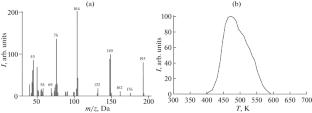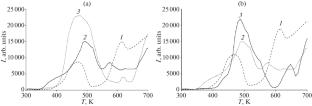亚克力石材的耐热性
IF 0.8
4区 化学
Q4 CHEMISTRY, PHYSICAL
引用次数: 0
摘要
研究了亚克力石材在250 ~ 650 K加热过程中的耐热性。由于矿物颜料和填料在某些样品的配方中过量存在,它们会促进聚合物石材有机成分的热破坏,并对其耐热性产生不利影响。本文章由计算机程序翻译,如有差异,请以英文原文为准。


Heat Resistance of Acrylic Stones
The heat resistance of acrylic stones during their heating in the temperature range of 250–650 K was studied. Due to their excessive presence in the formulation of some samples, the mineral pigments and fillers facilitate the thermal destruction of the organic components of polymer stones and adversely affect their heat resistance.
求助全文
通过发布文献求助,成功后即可免费获取论文全文。
去求助
来源期刊
CiteScore
1.20
自引率
14.30%
发文量
376
审稿时长
5.1 months
期刊介绍:
Russian Journal of Physical Chemistry A. Focus on Chemistry (Zhurnal Fizicheskoi Khimii), founded in 1930, offers a comprehensive review of theoretical and experimental research from the Russian Academy of Sciences, leading research and academic centers from Russia and from all over the world.
Articles are devoted to chemical thermodynamics and thermochemistry, biophysical chemistry, photochemistry and magnetochemistry, materials structure, quantum chemistry, physical chemistry of nanomaterials and solutions, surface phenomena and adsorption, and methods and techniques of physicochemical studies.

 求助内容:
求助内容: 应助结果提醒方式:
应助结果提醒方式:


